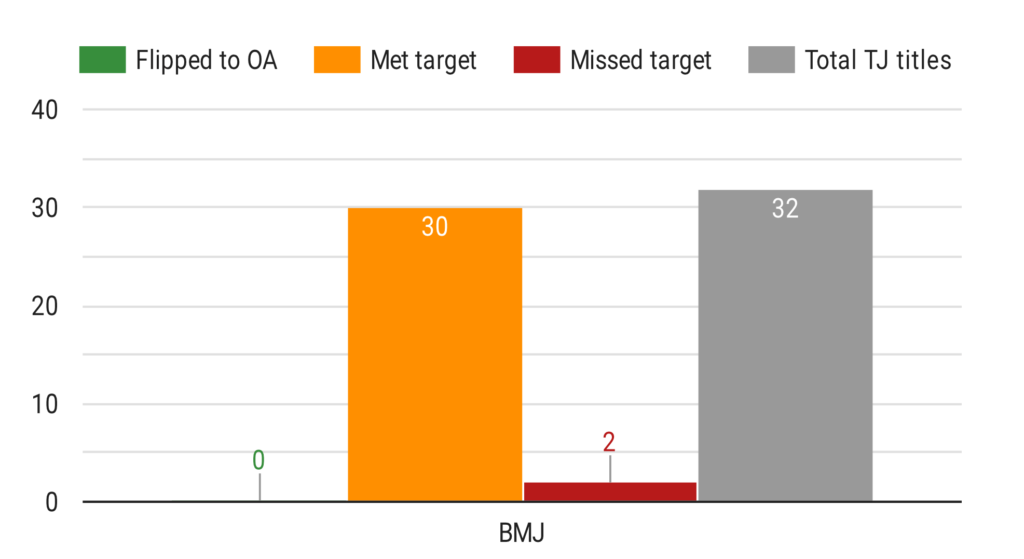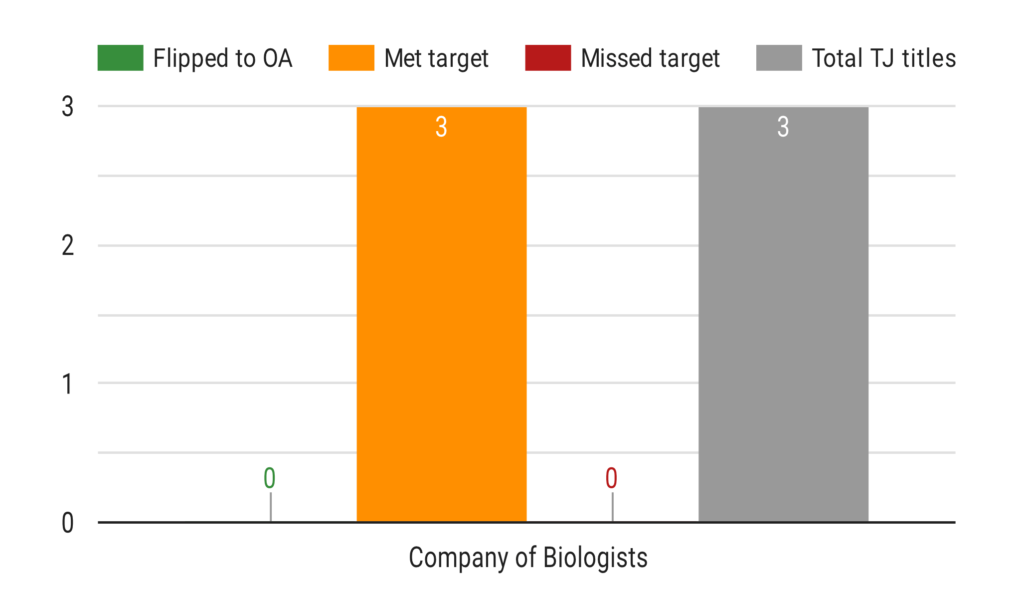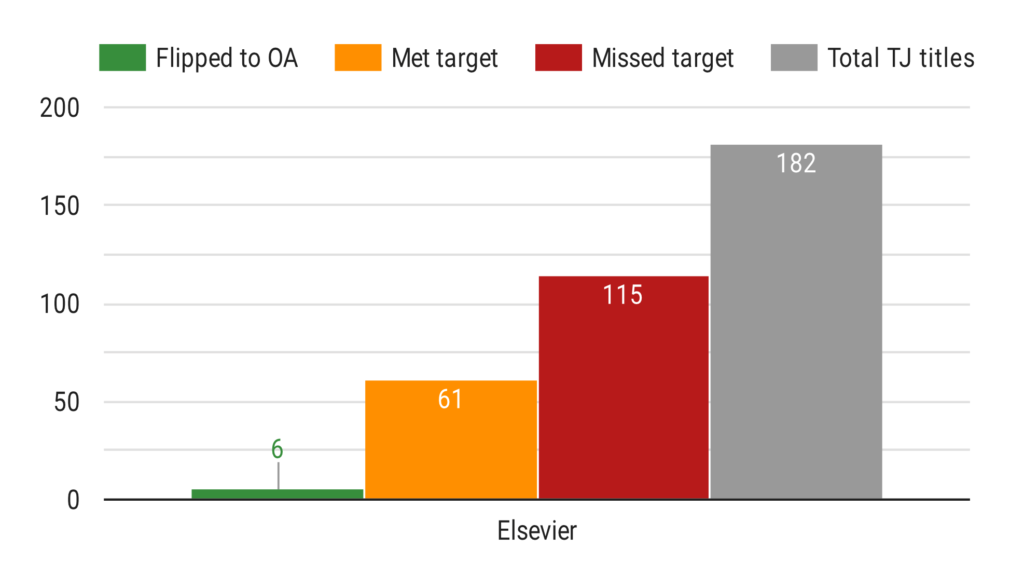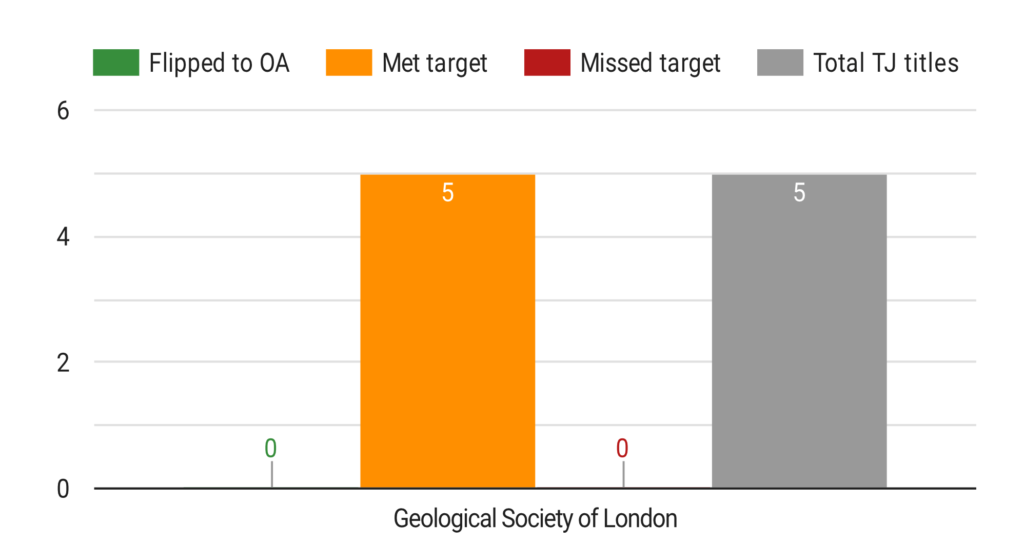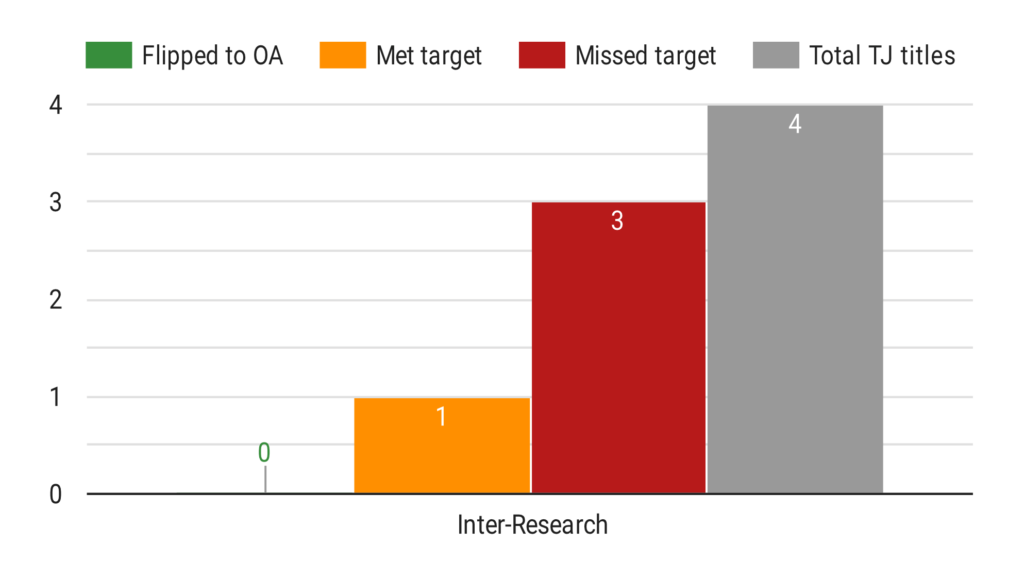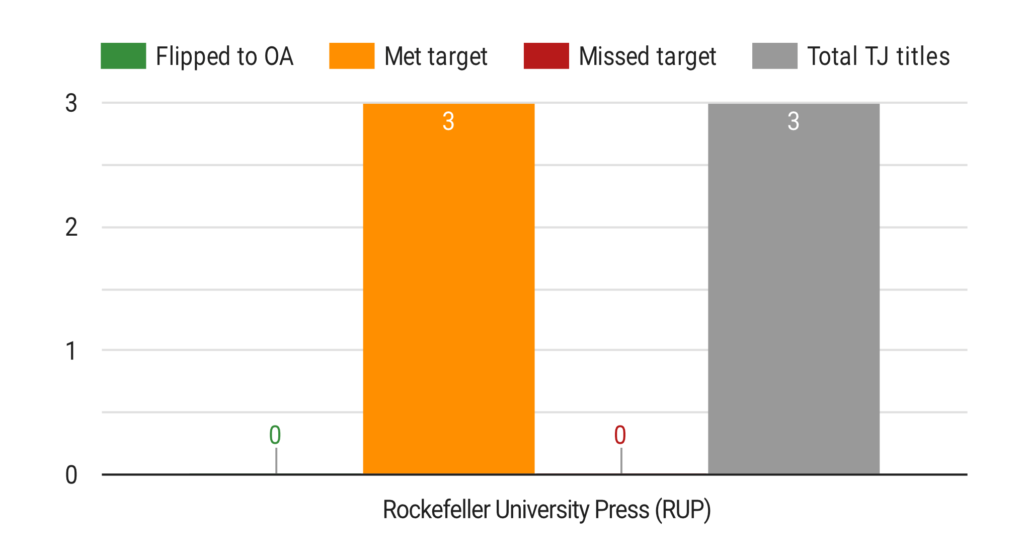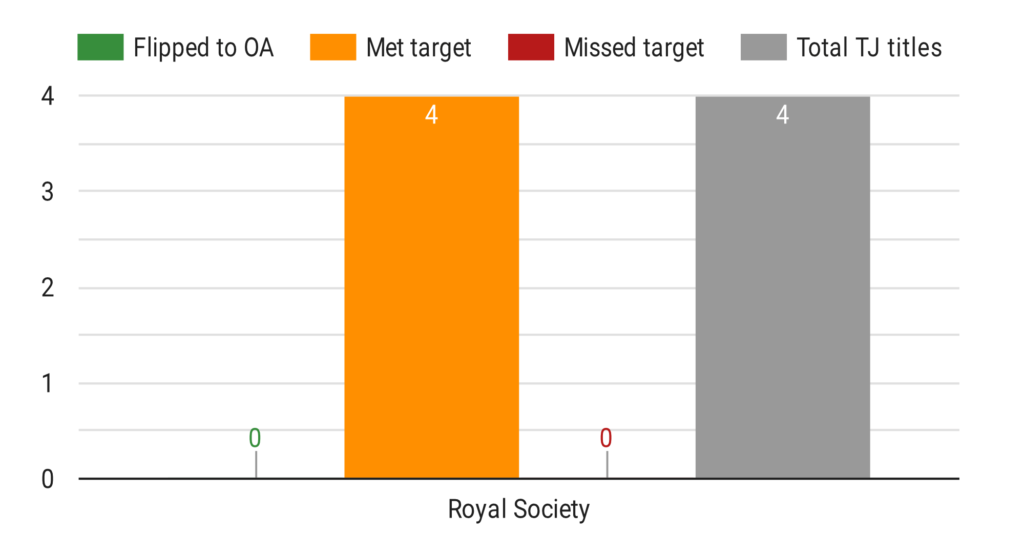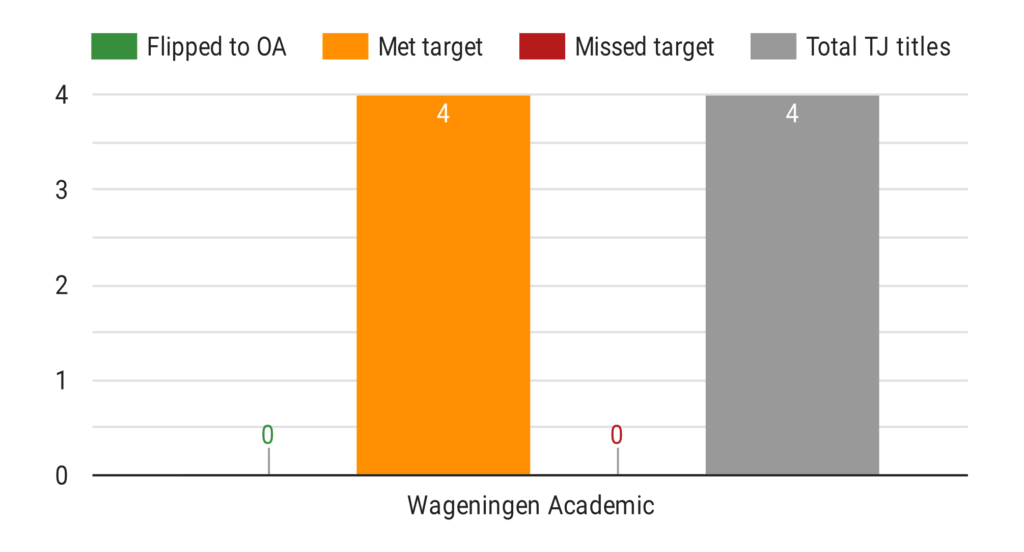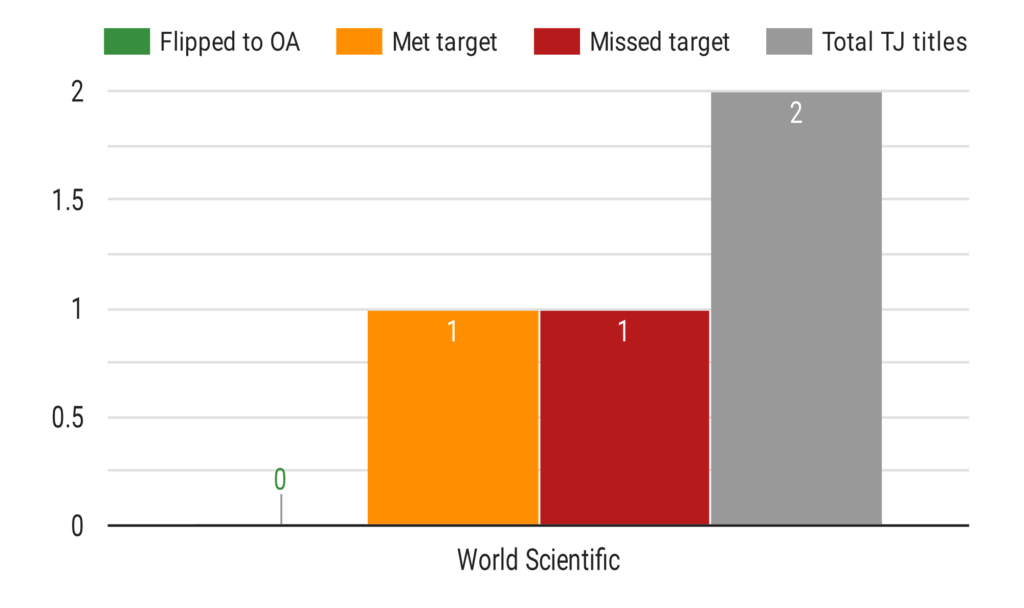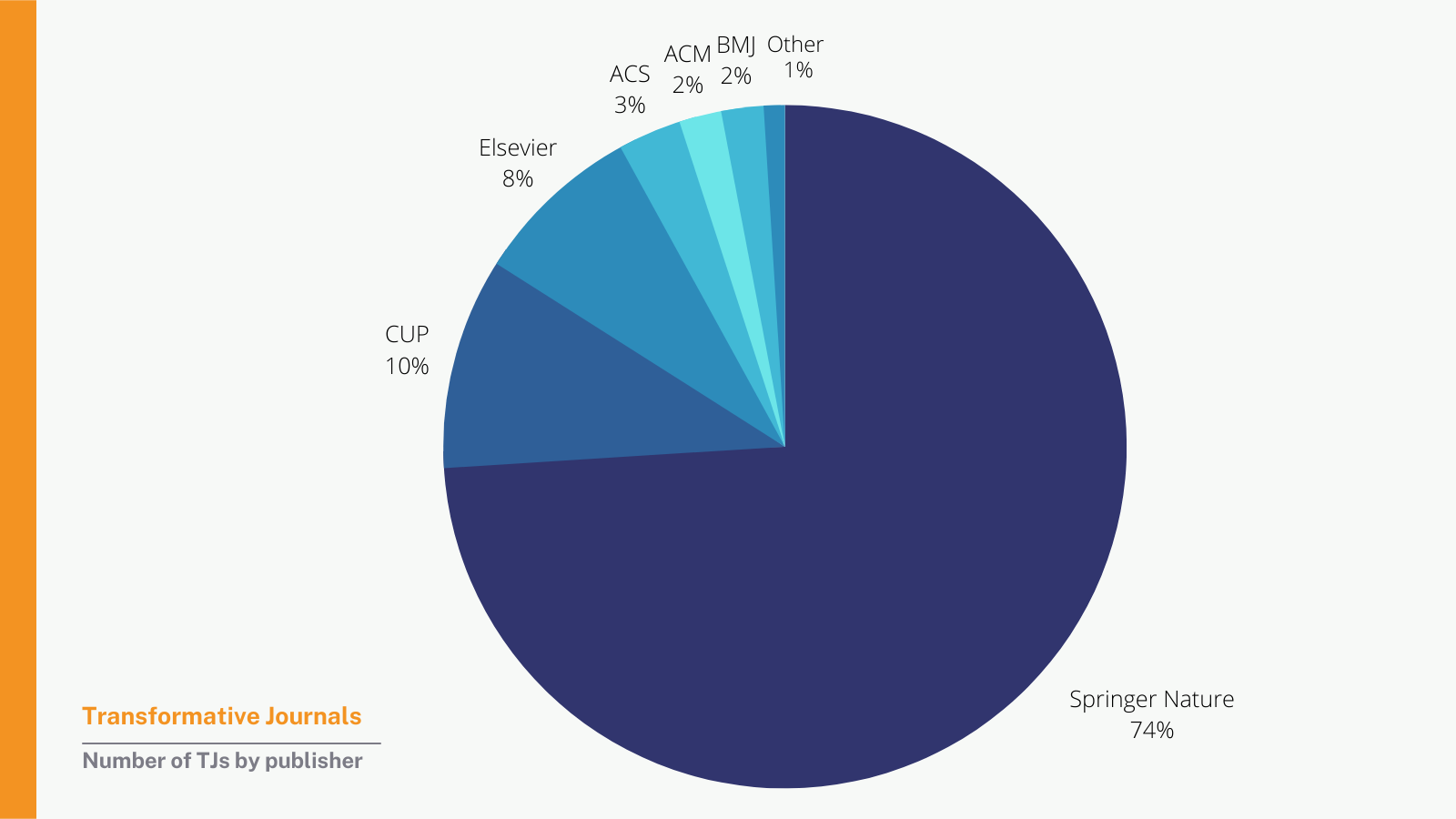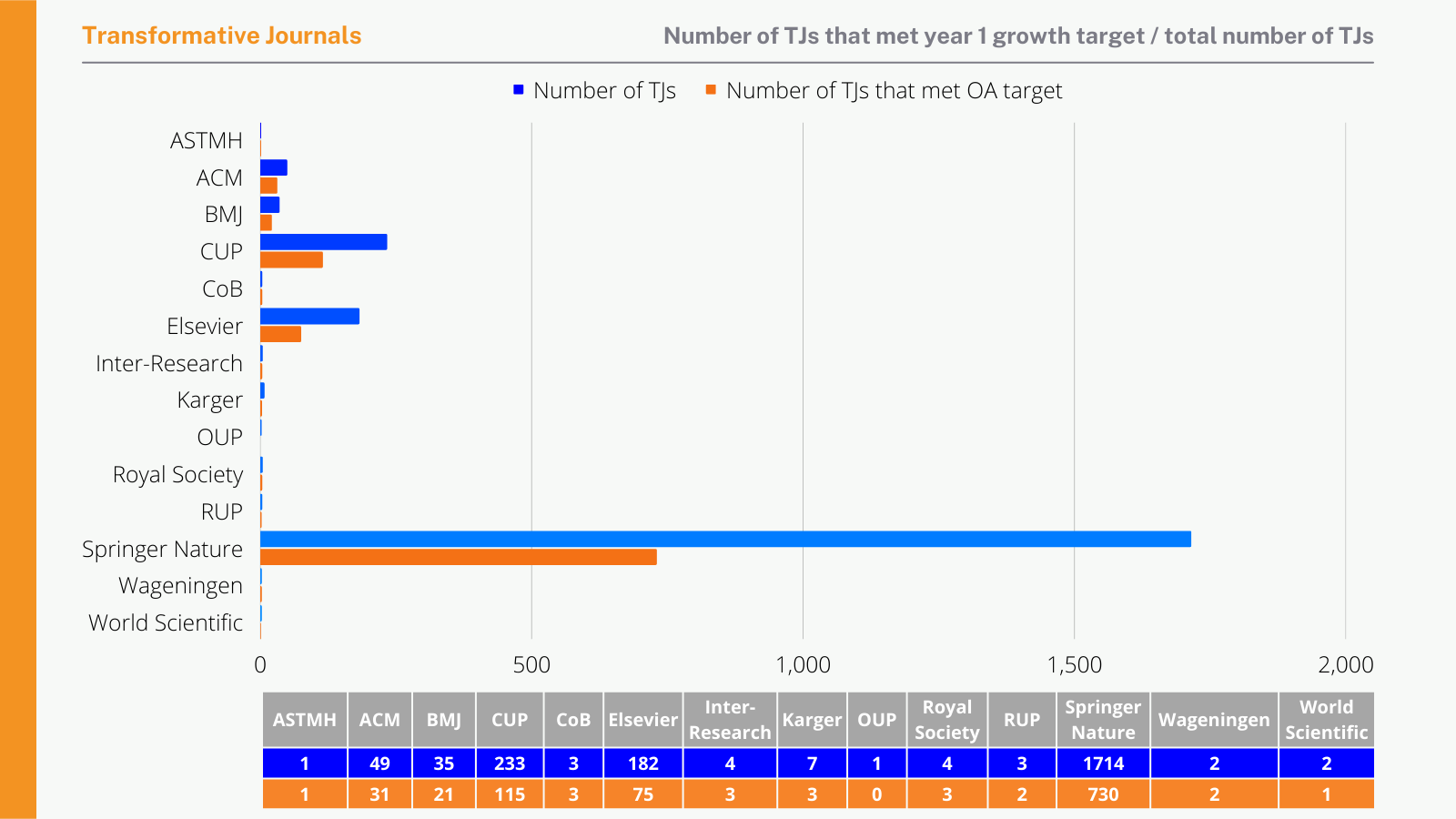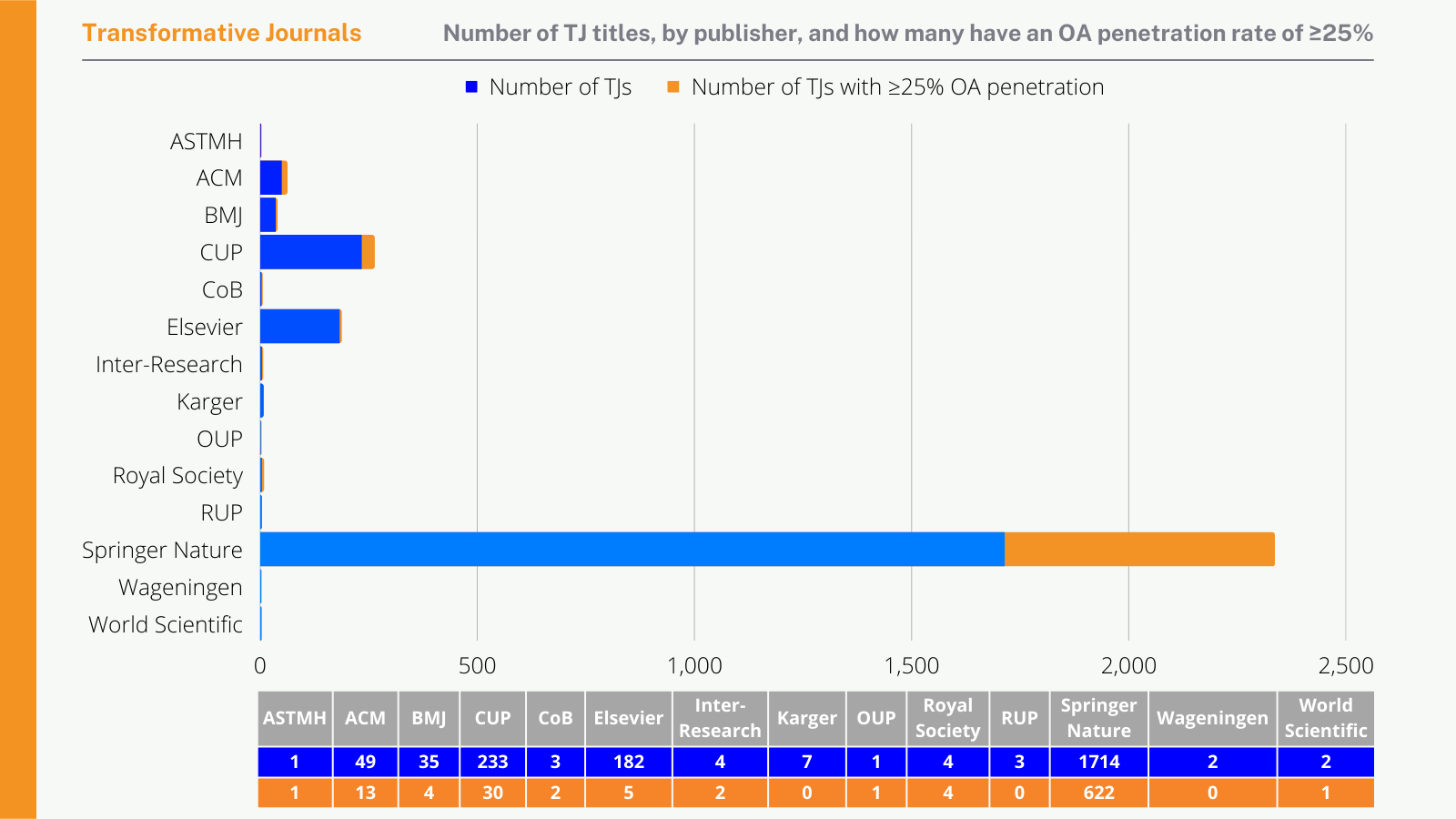From inception to global impact
In September 2018, a group of national research funding organizations, with the support of the European Commission, rallied behind an initiative to make research publications openly accessible to all: Plan S. These visionary organizations came together as cOAlition S, and adopted a set of 10 principles that were intended to function as a catalyst for the accelerated transition to full and immediate Open Access. For most cOAlition S members, the policies and tools that support the implementation of Plan S came into effect in 2021.
Although the full impact of these policies will still take several years to unfold, it is a good moment to reflect on what has been achieved so far. I joined cOAlition S exactly one year after its inception, as its Executive Director, and have therefore been privileged to participate in the journey that the cOAlition S community – Experts, Leaders, Ambassadors, Supporters, and Office – have undertaken, and the remarkable progress we have achieved together.
In five years, cOAlition S has grown from a dozen to a network of 28 funders. What is remarkable is that this reach extends beyond Europe, encompassing agencies from the US, Australia and South Africa. This expansion has sparked a ripple effect, with even non-cOAlition S funders developing policies that are largely aligned with Plan S. This is evident in the US with the August 2022 Nelson memo, Canada, India, Germany and elsewhere. Governments in Europe and beyond have also become more vocal about Open Access to research results, as evidenced in the European Council Conclusions and the G7 Science and Technology Ministers declaration of last May. Plan S and cOAlition S have certainly contributed to a consensus among research funding agencies worldwide that Open Access to research results is a priority that requires international alignment.
During those five years, publishers have changed tack as well. They seem to increasingly recognise that it is no longer about whether they should flip to Open Access, but how they should flip to Open Access. Some of them have made changes to their policies to comply with Plan S principles, or they are exploring new models such as Subscribe to Open, Diamond Open Access, and other non-APC models.
Navigating the Open Access landscape: routes and tools
From the start, Plan S adopted an agnostic approach to Open Access routes. Whether it is via publication in full Open Access journals, or titles made available under a Transformative Arrangement, or making the Accepted Manuscript available through a repository, cOAlition S accommodates diverse routes to compliance.
To help authors choose publishing options that are supported by their funder’s Open Access policy, cOAlition S developed the Journal Checker Tool (JCT), a trusted resource now serving 3000 users per month. In support of the Repository Route, we developed the Rights Retention strategy; a strategy that was enthusiastically adopted by many universities and institutions.
Responding to the library community’s calls for price transparency of the publishing services they procure, cOAlition S designed and developed the Journal Comparison Service (JCS), an online platform helping users to determine if prices for publishing services are fair and reasonable.
Towards more equity in Open Access
As the Open Access landscape evolves, cOAlition S evolves with it. Based on progress reports and the very low Open Access transformation rate of Transformative Journals, cOAlition S decided to end its financial support for Transformative Arrangements. Instead, it will direct its efforts to more innovative and community-driven Open Access publishing initiatives.
In collaboration with various international organizations, cOAlition S also pursues work for more equity in Open Access, via a series of workshops, a study exploring if Purchasing Power Parity could improve APC inequity, and a working group exploring new, non-APC-based business models.
In addition, cOAlition S acknowledges the growing need for alternative, not-for profit publishing models, and is actively involved in European and global efforts for Diamond OA: the EC-funded DIAMAS and CRAFT-OA projects, the Action Plan for Diamond Open Access, and the Global Diamond Open Access Summit.
Finally, cOAlition S is contributing to improving research assessment by joining the Coalition for Advancing Research Assessment (CoARA), specifically to encourage those who undertake research assessment exercises, to move away from journal metrics and to better value Open Access publishing by authors.
A collaborative journey
This is also a good time to thank everyone who was involved in the cOAlition S community. First and foremost, the Experts who represented their funding organizations in the Expert group. They managed to build an online collaborative Expert community that co-created the backbone of our joint policies, and consult each other regularly about policy implementation and challenges. This group is without any doubt cOAlition S’s strongest secret weapon. The Leaders group should be thanked for the confidence they have shown in the Plan S principles and implementation. Thanks are also due to the cOAlition S Executive Steering Group, who meet fortnightly to advise and make decisions on policy matters. Finally, I would like to thank the European Science Foundation – Science Connect for hosting the cOAlition S Office, and diligently managing the human resources and financial aspects of our operations.
Looking forward: a path to Responsible Publishing
The Plan S mission is certainly not accomplished yet. Looking to the future, we believe there is room for accelerating Open Access even more and making it more equitable. For this, we are working on a “Towards Responsible Publishing” proposal, which aims to foster a community-based communication system for open science in the 21st century. This proposal, set to be released within two months, will be followed by a large-scale consultation with the research community. Additionally, we will be commissioning an independent review of the contribution Plan S has made to the Open Access publishing landscape.
To mark the 5th anniversary of Plan S, we are organizing a webinar on Thursday 2nd November 2023, between 17.00 – 19.00 CET. The event will explore how Plan S has developed since its launch as well as what lies ahead for the future of scholarly communication. We are looking forward to seeing you there!
Introduction
The Transformative Journal (TJ) model was one of the strategies cOAlition S developed to help subscription publishers transition to full and immediate Open Access (OA) in a defined timeframe. This report looks at the data provided by the participating publishers for the calendar year 2022[1].
2022 data: executive summary
A key element of the TJ model is that participating journals must share data showing the OA penetration rate and whether they have met their agreed targets. Specifically, TJ titles are required to demonstrate an annual increase in the proportion of OA research content of at least 5% points in absolute terms and at least 15% in relative terms, year-on-year. Journals in the programme also agree to flip to full OA when 75% of the research content is published in this way.
Analysis of the 2022 data shows that of the 2326 titles in the TJ programme:
- 26 titles (1%) flipped to full OA from 1st January 2023
- 695 titles (30%) met or exceeded their OA growth targets and remain in the TJ programme
- 1589 titles (68%) failed to meet their OA growth targets and will be removed from the TJ programme.
- 16 other titles (1%) were removed from the programme for other reasons. Such reasons include the publisher no longer holding that title, having ceased publication of a title, among others.

Figure 1: Summary of the 2022 TJ data
Methodology
All TJ publishers were provided with a reporting template to indicate how many research articles they published in 2022, and how many were published as OA. Using previously publisher-supplied data from 2021, the template determined whether the 2022 growth target had been met and, if so, what the new OA penetration target is for 2023. The template also collected data on citations and downloads to show how articles published OA compared with articles (in the same title) published behind a paywall.
In analysing the reports, all titles were assigned a status of one of four mutually exclusive types:
- Journal has already flipped to full OA from 1st January 2023 (and thus will no longer be considered as a TJ)
- Journal has met the OA growth targets – and will continue as a TJ in 2023
- Journal has not met the TJ growth targets and will be removed from the TJ programme
- Other: this includes journals which have ceased publication, moved to another publisher or the publisher has decided to withdraw from the TJ programme.
Note that if a publisher indicated that they planned to flip some titles to full OA in 2024, this is recorded below. However, this doesn’t affect its TJ status. For example, if a title missed its 2022 target, it will still be classified as being withdrawn from the programme, even if the journal is planning to flip to full OA in 2024.
Analysis
Of the 16 TJ publishers, seven (ASTMH, Company of Biologists, Karger, Geological Society of London, Rockefeller University Press (RUP), The Royal Society and Wageningen Academic) met or exceeded all their 2022 TJ targets. And though the number of TJ titles published by these seven publishers is relatively small (26 titles), it is interesting to note that, on average, learned society publishers seem to be more successful in meeting TJ targets than some of their commercial counterparts.
Of the publishers with larger TJ portfolios it is good to see that 94% of the BMJ titles (32 journals) and 62% of Cambridge University Press (CUP) titles (240 journals), met or exceeded their growth targets.
Cognisant that the overarching aim of the programme is to encourage journals to flip to full OA (or at least the research content they publish), it was encouraging to see that 75% of Oxford University Press (OUP) TJ titles (3 out of 4) had already flipped, as had 11 titles in the Springer Nature portfolio. In line with CUP’s stated ambition that the “vast majority of its research papers to be published OA by 2025”, the data also shows that, in addition to five flips to OA in 2023, a further 40 titles will flip from 1st January 2024.
Comparing the 2022 OA penetration rates with those provided in 2021 (see Figure 2) it is evident that the transition to OA has begun. For example, in 2021, there were 851 TJ titles which reported an OA penetration rate of 10% or less; in 2022, the number of TJ titles with this penetration rate had fallen to 578.
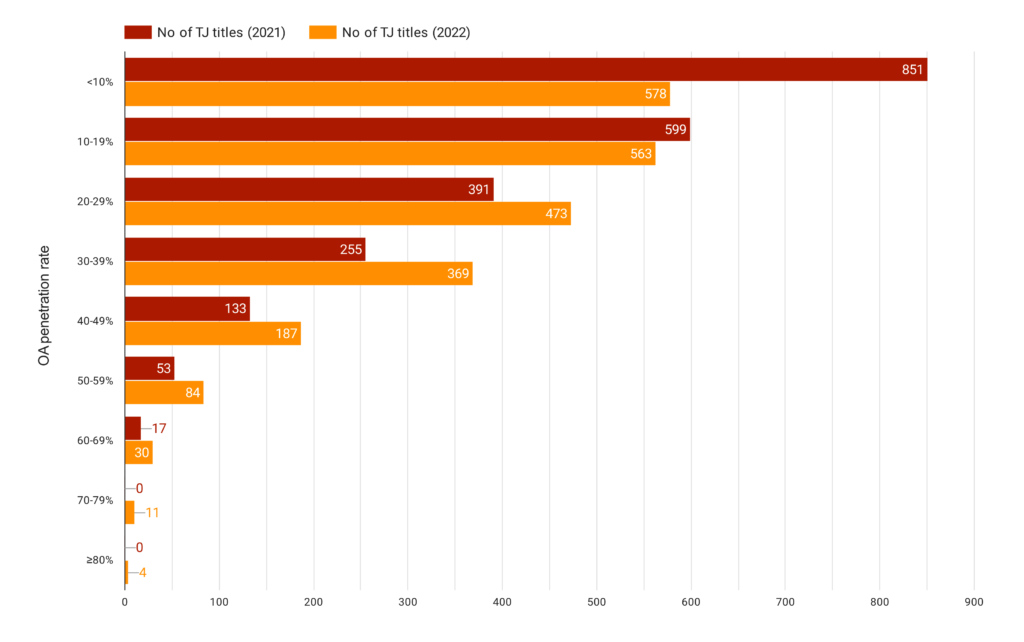
Figure 2: Comparing TJ OA penetration rates 2021 v 2021
However, despite these positive developments, it is clearly disappointing that over two thirds (68%) of the journals in the TJ programme failed to meet their OA growth targets. And, as made clear last year, titles which do not meet their targets will be removed from the TJ programme. As such, 1589 titles will lose their TJ status at the end of 2023.
Looking at the performance of individual publishers, the data shows that some 77% (1329) of titles published by Springer Nature – by far the largest publisher in the programme with some 1721 TJ titles – failed to meet their TJ targets. For Elsevier and the America Chemical Society (ACS) the figures were 63% (115 titles) and 56% (36 titles), respectively. Figure 3, provides a summary of all the data provided by all participating publishers.
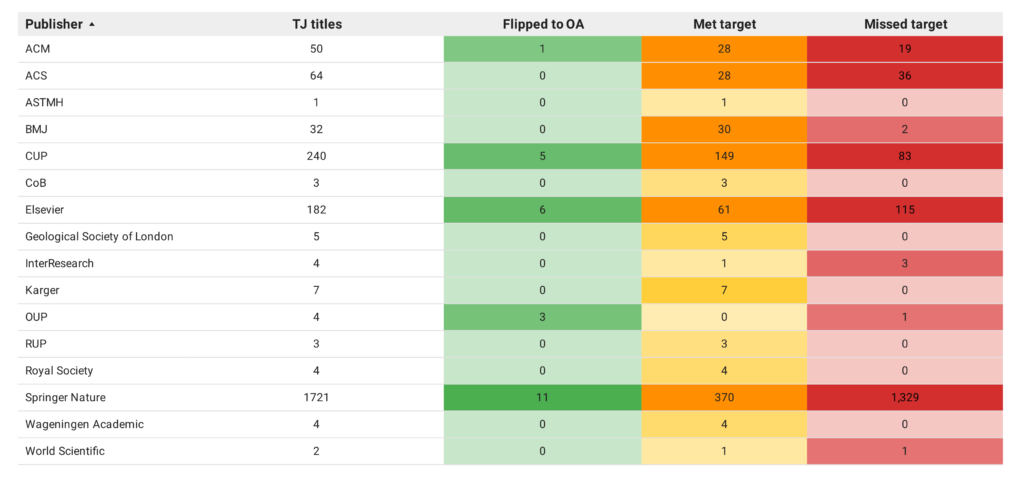
Figure 3: TJ summary, by publisher
The fact that so many titles were unable to meet their OA growth targets suggests that for some publishers, the transition to full and immediate open access is unlikely to happen in a reasonable timeframe. As cOAlition S was seeking to encourage a time-limited transition, the decision to terminate this programme at the end of 2024 appears well-founded.
One of the conditions that a publisher agrees to when applying for cOAlition S TJ status is that when the OA penetration rate meets or exceeds 75% of the published research content, the journal will flip to full OA. As the data shows, relatively few titles are anywhere near this threshold: indeed, 25% of all TJs had an OA penetration rate of 10% or less in 2022 (see Figure 2).
It is especially discouraging to note that there are at least six titles, published by Springer Nature, which have been unilaterally withdrawn from the TJ programme, despite meeting this 75% OA penetration rate threshold.
For example, the 100% of the articles published in the journal European Journal for Security Research were published OA in 2022; for the International Review of Intellectual Property and Competition Law the OA penetration rate was 95%. Even ignoring the question as to what content subscribers are still paying for, if a title is not prepared to flip at these levels of OA, the only logical conclusion is that they will never flip to full OA.
Download / citation data and price transparency
As noted previously, the data also shows that, on average, OA content is downloaded more often than subscription content in the same journal. Springer Nature, for example, report that in 2022 OA articles published in TJs received, on average, 1.4 times more usage than subscription articles in the same journals.
The citation data is less clear cut. For example, the difference in the average number of citations made to articles published OA in Elsevier TJs, compared to articles in the same journals which are paywalled, is minimal: an average of 1.3 citations (OA articles) compared to 1.2 citations (for paywalled articles).
Participating publishers are also required to show how subscription prices are impacted as a result of some content being published OA. Expressed simply, if the volume of published content remains static year-on-year, then as the proportion of OA content increases, we should expect to see a decrease in the price of subscriptions. The Royal Society, for example, show how the subscription price for the journal Biology Letters fell by 4.74% (even after inflation of 4.1% has been added) because of the increase in the proportion of OA content.
In last year’s TJ report, we called on all TJ publishers to follow the lead of the Royal Society and show, at the journal level, how the availability of OA content has impacted on the subscription price. Unfortunately, many publishers – including ACS, Elsevier and Springer Nature have continued to provide more generic statements, making it impossible for subscribers to verify that they are not actually paying for OA content.
Annex A, below, provides information about each participating TJ publisher.
The complete data set on which the analysis was based on can be downloaded here.
Annex A: 2022 TJ data
American Chemical Society (ACS)
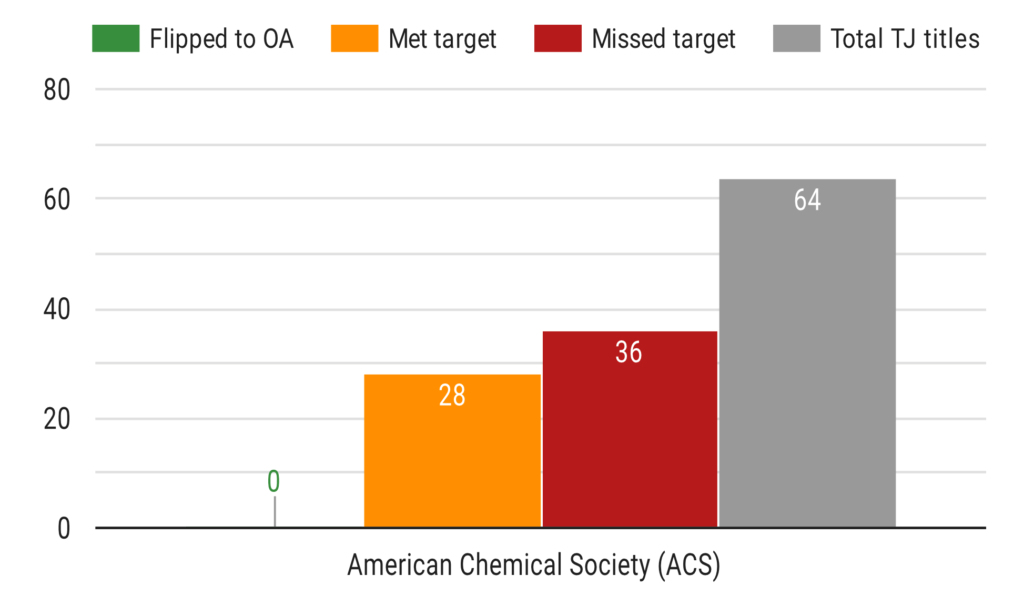
- TJ titles that met 2022 OA growth target: 44%
- TJ titles that missed 2022 OA growth targets and will lose TJ status: 56%
- Future flips (from 1/1/2024): None indicated
- Transparent pricing (source)
- Data (source)
- Notes: As ACS joined the programme on 1st April 2022, the OA growth targets have been adjusted to 75% (i.e. rather than 5% growth, each title needs to grow by at least 3.75%)
American Society for Tropical Medicine & Hygiene (ASTMH)
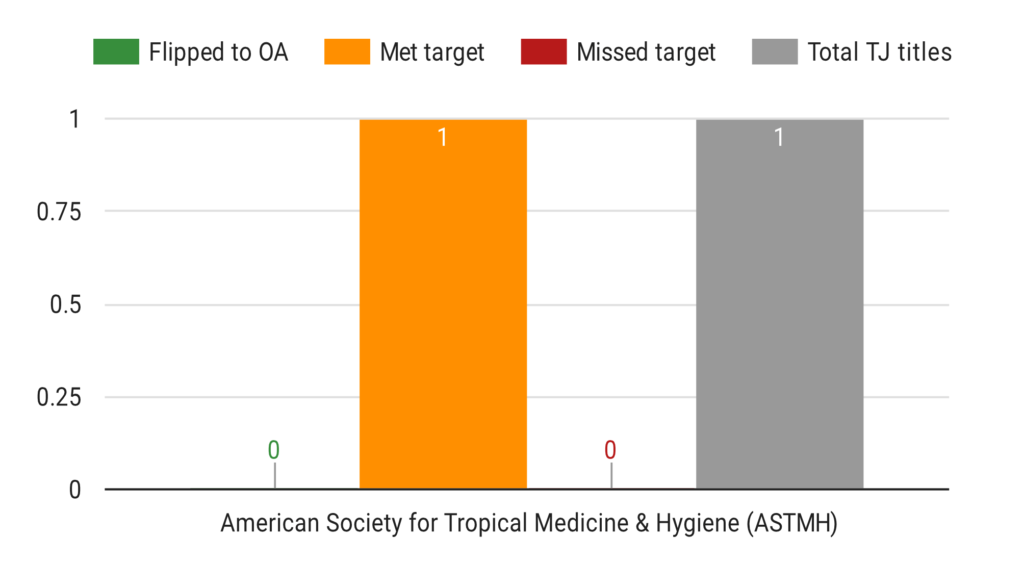
- TJ titles that met 2022 OA growth target: 100%
- Future flips (from 1/1/2024): None indicated
- Transparent pricing: not provided
- Data (source)
- Notes: Download and citation data not provided.
Association for Computing Machinery (ACM)
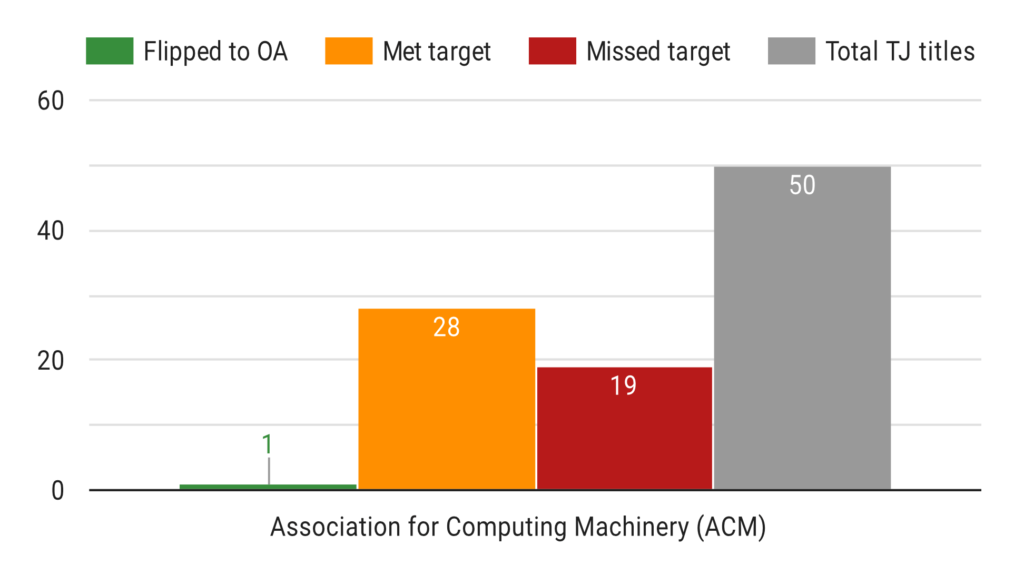
- TJ titles that flipped to full OA from 1/1/2023: 2%
- TJ titles that met 2022 OA growth target: 56%
- TJ titles that missed 2022 OA growth targets and will lose TJ status: 38%
- Other: 2 titles (4%) have been withdrawn from TJ programme by ACM as the journals are closing at the end of 2023
- Future flips (from 1/1/2024): None indicated
- Transparent pricing (source)
- Data (source)
BMJ
Cambridge University Press (CUP)
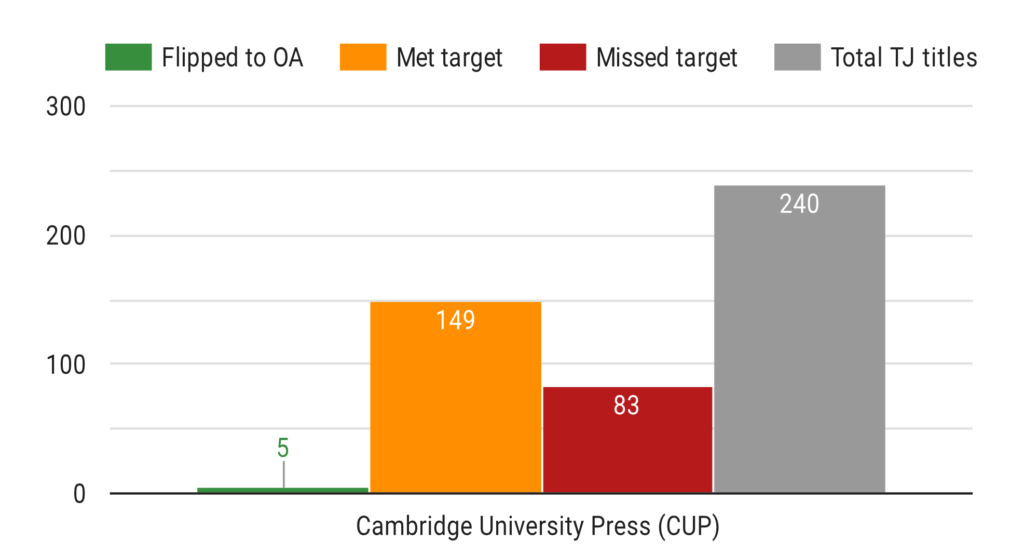
- TJ titles that flipped to full OA from 1/1/2023: 2%
- TJ titles that met 2022 OA growth target: 62%
- TJ titles that missed 2022 OA growth targets and will lose TJ status: 35%
- Other: one journal will cease publication at the end of 2023; two other titles have moved to a different publisher.
- Future flips (from 1/1/2024): 40 TJ titles
- Transparent pricing (source)
- Data (source)
Company of Biologists (CoB)
Elsevier
Geological Society of London
Inter-Research
Karger
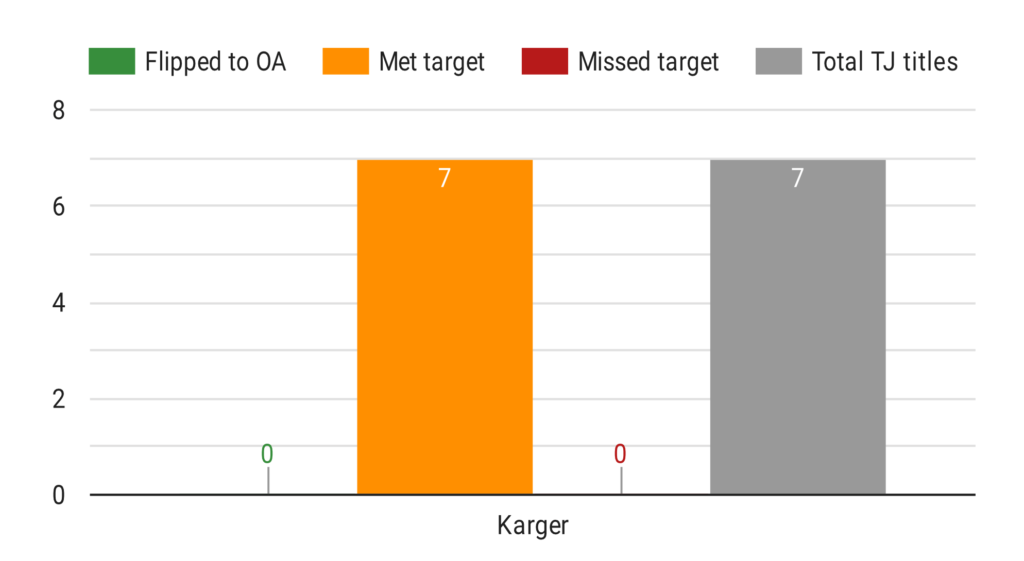
- TJ titles that met 2022 OA growth target: 100%
- Future flips (from 1/1/2024): None indicated
- Transparent pricing: Not provided
- Data: Not provided
Oxford University Press (OUP)
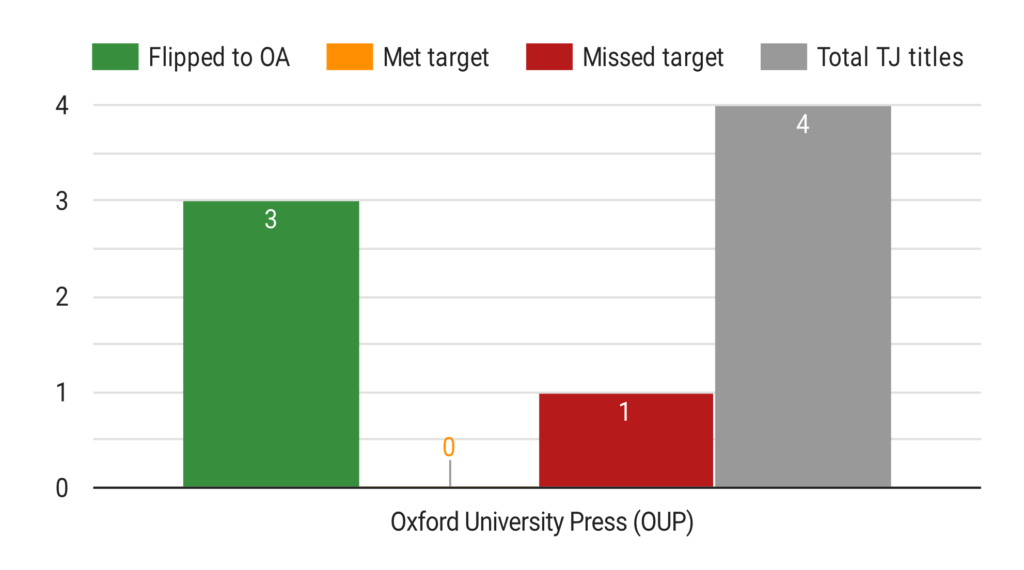
- TJ titles that flipped to full OA from 1/1/2023: 75%
- TJ titles that missed 2022 OA growth targets and will lose TJ status: 25%
- Future flips (from 1/1/2024): None indicated
- Transparent pricing: Not provided
- Data: Not provided
Rockefeller University Press (RUP)
The Royal Society
Springer Nature
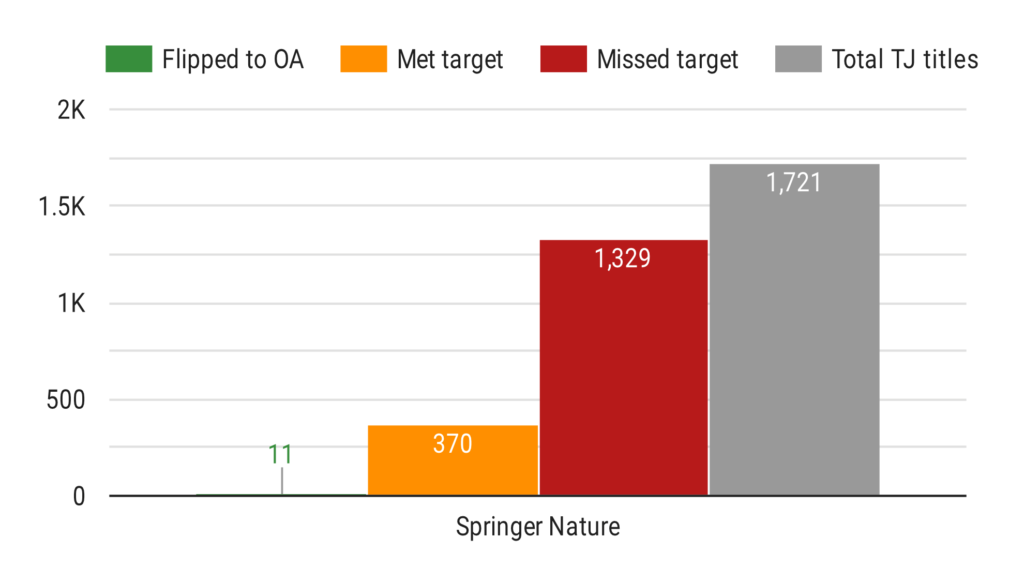
- TJ titles that flipped to full OA from 1/1/2023: 0.6%
- TJ titles that met 2022 OA growth target: 21.5%
- TJ titles that missed 2022 OA growth targets and will lose TJ status: 77.2%
- Other: 3 titles are no longer published by SN; 8 titles have been withdrawn from the programme
- Future flips (from 1/1/2024): 23 TJ titles
- Transparent pricing (source)
- Data (source)
Wageningen Academic
World Scientific
[1] Note that five publishers – Canadian Science Publishing, Cold Spring Harbor Laboratory Press, EMBO Press, IEEE and Royal Society of Chemistry – only joined the TJ programme in late 2022 and thus have not been required to provide data for this report. They will be required to provide data for the 2023 report.
The following article by Niamh Tumelty was originally published on the “Unlocking Research” blog, which is maintained by the Office of Scholarly Communication based in the University of Cambridge Library and the University Research Office.
We’re delighted to announce that the University of Cambridge has a new Self-Archiving Policy, which took effect from 1 April 2023. The policy gives researchers a route to make the accepted version of their papers open access without embargo under a licence of their choosing (subject to funder requirements). We believe that researchers should have more control over what happens to their own work and are determined to do what we can to help them to do that.
This policy has been developed after a year-long rights retention pilot in which more than 400 researchers voluntarily participated. The pilot helped us understand the implications of this approach across a wide range of disciplines so we could make an informed decision. We are also not alone in introducing a policy like this – Harvard has been doing it since 2008, cOAlition S have been a catalyst for development of similar policies, and we owe a debt of gratitude to the University of Edinburgh for sharing their approach with us.
Some of the issues that cropped up during the pilot were outlined by Samuel Moore, our Scholarly Communications Specialist, in an earlier post on the Unlocking Research blog. The patterns we saw at that stage continued throughout the year-long pilot – there was no issue for most articles, but some publishers caused confusion through misinformation or by presenting conflicting licences for the researchers to sign. We do recognise that there are costs involved in high quality publishing, and we are willing to cover reasonable costs (while noting our concerns around inequities in scholarly publishing). The fact is that some publishers are trying to charge the sector multiple times for the same content – subscription fees, OA fees, other admin fees – all while receiving free content courtesy of researchers that are usually funded by the taxpayer and charity funders.
Many researchers and funders are understandably becoming firmer in their convictions that publicly funded research should be openly and publicly available. We are fortunate that at Cambridge we are in a position to support this through our support for diamond publishing initiatives (in which the costs of publishing are absorbed for example by universities and no fees are charged to the reader or the author), through read and publish agreements negotiated on behalf of the UK higher education sector and through payment of costs associated with publishing in fully open access venues. Rights retention gives researchers a back-up plan for when other routes are not available to them, e.g. when a journal moves unexpectedly out of a read and publish agreement or a publisher does not offer any publishing route that meets their funder requirements.
This is not the end goal, we have work to do to reach an equitable approach to global scholarly publishing, and we can learn a lot especially from how South America approaches these issues. We welcome opportunities to work together with others around the world to create a more sustainable and equitable future for scholarly communications.
Read more about the new Cambridge Self-Archiving Policy on the Cambridge Open Access website.
The Transformative Journal (TJ) model is one of the strategies cOAlition S endorses to help subscription publishers transition to full and immediate Open Access (OA). To be awarded TJ status, a title must publicly commit to transitioning to fully Open Access, and agree to:
- work to increase the share of Open Access content, year on year, in line with publicly agreed targets; and
- offset subscription income from payments for publishing services (to avoid double payments).
As of June 2022, some 16 publishers – large and small, for-profit, not-for-profit, society publishers and university presses – totalling some 2304 journals, have enrolled in this programme. Figure 1, shows the breakdown of TJs by publisher. [Note: The “Other publishers” category is made up of 9 other publishers, who between them have 26 Transformative Journals].
Figure 1: Number of TJs by publisher
This blog post provides a summary of the first full year of the TJ programme, using data supplied by all participating publishers. [Note: As the ACS only joined the TJ programme in April 2022, the analysis below excludes this publisher].
Any publisher who wishes to join the TJ programme should apply using the form available at: https://www.coalition-s.org/tj-forms
Year 1 data: summary
A key element of the TJ model is that designated journals must publish data showing the OA penetration rate and whether they have met their agreed targets. Specifically, TJ titles are required to demonstrate an annual increase in the proportion of OA research content of at least 5% points in absolute terms and at least 15% in relative terms, year-on-year.
Although analysis of Year 1 data shows that 44% of TJ titles met or exceeded their targets, some 56% of TJs did not meet their Year 1 targets. This is perhaps understandable as the TJ model is new and may take some time to be fully established.
In light of this, cOAlition S agreed that if a TJ did not meet its Year 1 (2021) OA target, then the title can remain in the programme, provided that the journal agrees that the Year 2 target is calculated as if the Year 1 target had been achieved. Any title which misses their 2022 OA target will be removed from the programme. Figure 2 shows, by publisher, the number of TJs that met their year 1 growth target.
Figure 2: Number of TJs that met year 1 growth target/total number of TJs
As noted last year, another overarching observation is that the journals participating in the TJ programme are at very different points in their transition to OA. For example, if we look at the publisher with the single largest TJ portfolio – Springer Nature (SN) which has 1714 titles in the programme – we see that there are 91 titles (5%) which already enjoy an OA penetration rate greater than 50%. On the other hand, the SN portfolio also includes 545 titles (32%) whose OA penetration rate is 10% or less, including 85 journals (5%) that have not made a single research article OA with a CC BY licence.
Given that support for TJ’s (and indeed all transformative arrangements, including transformative agreements such as “Read and Publish” deals) from cOAlition S funders will cease at the end of 2024, if mixed model publishers wish to continue to access OA funds provided by cOAlition S funders, then they have a further two and half years to make this transition.
For many journals in the TJ portfolio, this will be challenging, as can be seen in Figure 3, which shows the number of TJ titles whose OA penetration rate is equal to or greater than 25%. And, though there is nothing magical about the 25% figure, it is being used here to suggest that these journals are more likely to make the transition to full OA.
Figure 3: Number of TJs whose OA penetration rate is 25% or greater
More positively we can report, for example, that ten SN titles will flip to OA – having exceeded the 75% OA penetration rate – and that two titles published by Oxford University Press and one title from ACM have already flipped to fully OA.
The data also demonstrably shows that, on average, OA content is downloaded about three times more often than subscription content in the same journal. The citation data is less clear cut, though SN reports that across the last three years (2019, 2020 and 2021), the average number of citations was higher for OA articles, than for subscription content.
Participating publishers are also required to show how subscription prices are impacted as a result of some content being published OA. Expressed simply, if the volume of published content remains static, then as the proportion of OA content increases, we should expect to see a decrease in the price of subscriptions. The Royal Society, for example, show how the subscription price for the journal Interface Focus fell by 16% in 2022 (even after inflation of 1.5% has been added) because of the increase in the proportion of OA content.
Other publishers in the TJ programme – such as Elsevier and SN have provided a more generic, anti-double dipping statement – and though this is helpful, all TJ publishers will be required to show how the availability of OA content has impacted the subscription price – at the journal level – in their 2022 TJ annual report.
Annex A provides a summary of the TJ report provided by each publisher. The source data is publicly accessible from the publisher sites (linked below) and we encourage readers to access this information and do their own analysis.
We have also created a consolidated spreadsheet to facilitate further analysis. This is provided on a best endeavours basis, and if there are any discrepancies between the data presented here and the information on the publisher site, the data on the publisher site should be considered the canonical source.
Robert Kiley
Head of Strategy, cOAlition S
Annex A: Analysis of Year 1 data, by publisher
The table below provides an analysis of Year 1 data by publisher. The data underlying these observations are freely available from the relevant publisher website.
| Publisher | Number of titles in TJ programme | Analysis |
|---|---|---|
| American Chemical Society (ACS) [TJ data] |
64 | ♦ Not applicable. ACS only joined the programme in April 2022. |
| American Society of Tropical Medicine & Hygiene (ASTMH) [TJ data, Price/offsetting data] |
1 | ♦ Journal exceeded its 2021 OA target of 45% — and has a 2022 OA target of 54% ♦ Downloads for OA content were almost 8 times higher for OA content compared with subscription content, in the same journal, over the same period of time. Citations for OA content were also higher. |
| Association for Computing Machinery (ACM) [TJ data, Price/offsetting data] |
49 | ♦ 31 titles (63%) met or exceeded their 2021 OA penetration target; 18 titles (37%) missed their OA target♦ 2021 OA penetration rates ranged from 3.7% to 47.8% ♦ In 2021, 13 titles (27%) reported an OA penetration rate that met or exceeded 25% ♦ One TJ title (Transactions on Privacy and Security) flipped to fully OA. ♦ On average, OA articles were downloaded 2.5 times more often than subscription content, in the same journal, over the same period of time. |
| BMJ [TJ data, Price/offsetting data] |
35 | ♦ 21 titles (60%) met or exceeded their 2021 OA penetration target; 14 titles (40%) missed their OA target♦ 2021 OA penetration rates ranged from 1% to 42% ♦ In 2021, 4 titles (11%) reported an OA penetration rate that met or exceeded 25% ♦ On average, OA articles were downloaded times more often than subscription content, though the difference is not significant (i.e. average number of downloads for subscription articles is 829, compared with 910 for OA content.) |
| Cambridge University Press [TJ data, Price/offsetting data] |
233 | ♦ 115 titles (49%) met or exceeded their 2021 OA penetration target; 116 titles (50%) missed their OA target. [2 TJ titles are no longer published by CUP] ♦ 2021 OA penetration rates ranged from 0% to 67% ♦ In 2021, 30 titles (13%) reported an OA penetration rate that met or exceeded 25% ♦ On average, OA articles were downloaded 3.2 times more often than subscription content, in the same journal, over the same period of time. |
| Company of Biologists (CoB) [TJ data, Price/offsetting data] |
3 | ♦ 3 titles (100%) met or exceeded their 2021 OA penetration target ♦ 2021 OA penetration rates ranged from 21% to 35% ♦ In 2021, 2 titles (66%) reported an OA penetration rate that met or exceeded 25% ♦ On average, OA articles were downloaded 1.8 times more often than subscription content, in the same journal, over the same period of time |
| Elsevier [TJ data, Price/offsetting data] | 182 | ♦ 75 titles (41%) met or exceeded their 2021 OA penetration target; 107 titles (59%) missed their OA target.♦ 2021 OA penetration rates ranged from 0% to 41% ♦ In 2021, 5 titles (3%) reported an OA penetration rate that met or exceeded 25% ♦ On average, OA articles were downloaded 2.5 times more often than subscription content, in the same journal, over the same period of time |
| Inter-Research Science Publisher [TJ data, Price/offsetting data] |
4 | ♦ 3 titles (75%) met or exceeded their 2021 OA penetration target; 1 title (25%) missed its OA target.♦ 2021 OA penetration rates ranged from 8% to 38% ♦ In 2021, 2 titles (50%) reported an OA penetration rate that met or exceeded 25% ♦ On average, OA articles were downloaded 17 times more often than subscription content, in the same journal, over the same period of time |
| Karger [TJ data, Price/offsetting data] |
7 | ♦ 3 titles (43%) met or exceeded their 2021 OA penetration target; 4 titles (57%) missed their OA target. ♦ 2021 OA penetration rates ranged from 0% to 11% ♦ In 2021, no titles (0%) reported an OA penetration rate that met or exceeded 25% ♦ On average, OA articles were downloaded 1.4 times more often than subscription content, in the same journal, over the same period of time |
| Oxford University Press (OUP) [TJ data, Price/offsetting data] |
1 | ♦ 0 title (0%) met or exceeded their 2021 OA penetration target; 1 title (100%) missed its OA target. ♦ 2021 OA penetration rate was 54% ♦ In 2021, 1 titles (100%) reported an OA penetration rate that met or exceeded 25% ♦ 2 journals which were previously registered as TJ’s flipped to full OA. ♦ On average, OA articles were downloaded 2.4 times more often than subscription content, in the same journal, over the same period of time. |
| Royal Society [TJ data, Price/offsetting data] |
4 | ♦ 3 titles (75%) met or exceeded their 2021 OA penetration target; 1 title (25%) missed its OA target. ♦ 2021 OA penetration rates ranged from 25% to 49% ♦ In 2021, 4 titles (100%) reported an OA penetration rate that met or exceeded 25% ♦ On average, OA articles were downloaded 2.8 times more often than subscription content, in the same journal, over the same period of time |
| Rockefeller University Press [TJ data, Price/offsetting data] |
3 | ♦ 2 titles (67%) met or exceeded their 2021 OA penetration target; 1 title (33%) missed its OA target. ♦ 2021 OA penetration rates ranged from 17% to 24% ♦ In 2021, 0 titles (0%) reported an OA penetration rate that met or exceeded 25% ♦ On average, OA articles were downloaded 2.7 times more often than subscription content, in the same journal, over the same period of time |
| Springer Nature [TJ data, Price/offsetting data] |
1714 | ♦ 730 titles (43%) met or exceeded their 2021 OA penetration target; 984 titles (57%) missed their OA target. ♦ 2021 OA penetration rates ranged from 5% to 96% ♦ In 2021, 622 titles (36%) reported an OA penetration rate that met or exceeded 25% ♦ 10 journals met or exceeded the 75% OA penetration rate and will flip to full OA. ♦ On average, OA articles were downloaded 2.8 times more often than subscription content, in the same journal, over the same period of time |
| Wageningen Academic Publishers [TJ data, Price/offsetting data] |
2 | ♦ 2 titles (100%) met or exceeded their 2021 OA penetration target ♦ 2021 OA penetration rates ranged from 5% to 8% ♦ In 2021, 0 titles (0%) reported an OA penetration rate that met or exceeded 25% ♦ On average, OA articles were downloaded 3.8 times more often than subscription content, in the same journal, over the same period of time |
| World Scientific [TJ data, Price/offsetting data] |
2 | ♦ 1 title (50%) met or exceeded its 2021 OA penetration target; 1 title (50%) missed its OA target. ♦ 2021 OA penetration rates ranged from 1% to 31% ♦ In 2021, 1 title (50%) reported an OA penetration rate that met or exceeded 25% ♦ On average, OA articles were downloaded 3.9 times more often than subscription content, in the same journal, over the same period of time |
cOAlition S has just issued its statement on Open Access (OA) for academic books. With this statement, cOAlitition S sets a clear direction for academic books to become OA. It recommends that “All academic books based on original research that was directly supported with funding from cOAlition S organisations should be made available open access on publication”. This is great news!
The OA Books Network (OABN), steered by OAPEN, SPARC Europe, OPERAS, and ScholarLed) salutes this clear support from cOAlition S for OA to books. While OA policies for journal articles have been developing rapidly for years, progress on the OA book side has been rather slow. However, this cOAlition S statement combined with the recently launched UKRI open access policy indicates that there is great potential for things to accelerate for OA books, too.
Opportunities
Next to the clear vision for OA academic books, we welcome specific aspects of the statement and its recommendations. Firstly, it clearly acknowledges the diversity of book publishing practices, also referred to as bibliodiversity.[1] Book publishing practices differ widely across geographical regions, language areas, and disciplines.[2] Recent workshops held by the OA Books Network (OABN) highlight this most starkly, showing that policy and local publishing traditions and markets influence how OA books deal with quality assurance, metadata, transparency, open licensing and business models.
Respecting the diversity of the OA books community is essential for any OA book policy to become successful. cOAlition S responds to this by inviting the larger OA books community to get involved in the development of implementation guidelines. Linked to this, we welcome the recommendation to retain the rights to publish OA and to allow for reuse which will for example enable more translations of the scholarly work and increased access to it worldwide.
During a series of events named “A Plan S for Books: Voices from the Community” organised by the OA Books Network (OABN) for the OA books community (including authors, researchers, publishers, librarians, infrastructure providers and others), we explored many of the aspects of OA book publishing that need to be considered when developing OA book policies. The summary of these events was delivered to cOAlition S to inform the funders about aspects that authors, researchers, publishers, librarians, infrastructure providers and others deem important and would like to explore further before settling detailed implementation guidelines for aligned OA book policies. These events involved more than 400 participants and proved that the OABN is a very suitable platform for international OA book community discussions. We therefore very much welcome that the cOAlition S statement recognizes the OABN’s ability to serve as an open forum for community input during the implementation process by naming it explicitly.
Furthermore, it is commendable that the statement acknowledges the position paper “Investing in Open Access Books Infrastructure” which raises concerns about gaps in the OA book infrastructure and calls for investment both in technical infrastructure and community infrastructure, like the OABN. We therefore also applaud the statement that “cOAlition S funders should financially support Open Access of academic books”, and the fact that the policy recognises that there are alternative business models evolving to enable OA book publishing. This will clearly accelerate open access to scholarly work.
The statement also highlights the OAPEN OA Books Toolkit which was launched last year containing and collecting valuable information of all aspects of OA book publishing. It is community-governed and could serve the implementation process well by hosting, structuring, and distributing descriptions, examples, use cases, and references of the many aspects of OA book policy making that the community has identified as critical aspects.
Finally, we are happy to see that cOAlition S acknowledges the need for existing technical infrastructures, like the Directory of Open Access Books. This is the world’s most comprehensive directory of academic OA books providing access to more than 44,000 OA books and chapters.
Next steps
The absence of a deadline for the implementation of the cOAlition S recommendations does signal an understanding that considerable time will be needed to properly realize them although defining one might help accelerate progress further. There is still a long way to go, and we believe that this can only be done in partnership with the OA books community.
The Statement explains that the technical standards on OA books should mirror the technical requirements that cOAlition S has set for OA journals and repositories. The issue of technical requirements for OA books, and where these differ from OA journals, was discussed in some detail at one of the “Voices from the Community” sessions.[3] [4] From this discussion it was quite clear that although book publishers do pay much attention to good quality metadata and output formats, open infrastructures are needed to generate, aggregate, organize and distribute any new metadata and output formats required – in particular for the smaller and medium-sized presses. This is not a trivial task, and we look forward to discussing how infrastructures for OA books can be further developed to enable publishers to comply with these technical requirements.
We consider this new cOAlition S statement on OA books as a welcome signal that cOAlition S intends to take a collaborative approach, with the view to bringing together both funders and practitioners in fruitful discussion resulting in clear action points. This is a great opportunity to begin a process leading towards sustainable policies based on constructive discussions, engagement, and investment from the whole OA books community. We embrace this approach and are keen to help accelerate open access to academic books together with the whole research funding community and all those who practice OA book publishing, authors, researchers, publishers, libraries, infrastructure providers and others.
♦ ♦ ♦
Co-authored by: Lucy Barnes (Open Book Publishers), Eelco Ferwerda (independent), Rupert Gatti (Open Book Publishers), Agata Morka (SPARC Europe), Tom Mosterd (DOAB), Pierre Mounier (OPERAS), Vanessa Proudman (SPARC Europe), Jeroen Sondervan (Utrecht University), Niels Stern (OAPEN) and Ronald Snijder (OAPEN)
[1] See for instance: Bibliodiversity in Practice: Developing Community-Owned, Open Infrastructures to Unleash Open Access Publishing
[2] For further reading, please refer to: The difference between an open access book and an open access journal
[3] For OA monographs see for instance: Metadata for open access monographs
[4] For books versus journals see: A literature review of scholarly communications metadata
cOAlition S endorses several strategies to encourage subscription publishers to transition to full and immediate Open Access (OA). These approaches are referred to as “Transformative Arrangements” and include Transformative Agreements, Transformative Model Agreements and Transformative Journals.
A Transformative Journal (TJ) is a subscription/hybrid journal that is actively committed to transitioning to a fully Open Access journal. In addition, a TJ must:
- gradually increase the share of Open Access content; and
- offset subscription income from payments for publishing services (to avoid double payments).
Some 16 months on from publishing the formal TJ criteria, 14 publishers – large and small, for-profit, not-for-profit, society publishers and university presses – and some 2240 journals, have enrolled in this programme.
This blog provides a summary of the uptake of the programme by publishers and an analysis of the initial data TJ publishers have provided.
Baseline data (Year 0)
A key element of the TJ model is that designated journals must meet Key Performance Indicators (KPIs) to remain in the programme.
Central to this is the requirement for journals to demonstrate an annual increase in the proportion of OA research content of at least 5% points in absolute terms and at least 15% in relative terms, year-on-year. This “double” requirement aims to accelerate OA growth once the journal reaches a critical share of OA articles. Indeed, as Table 1, below, shows, once the OA penetration rate exceeds 35%, the relative growth targets become more demanding than the absolute growth targets.
To determine Year 1 KPIs, we asked each participating publisher to provide us with data, at the journal level, showing the OA penetration rate for articles published in 2020, (or if preferred, a penetration rate based on the number of OA articles published over the three preceding years [2020, 2019, 2018]). In this blog post, this data is referred to as “Year 0 data”. For the avoidance of doubt, the OA penetration rate is defined as the share of OA, CC BY, zero embargo articles published in a given year by the publisher in a given TJ title.
Table 1, below, provides a worked example of the KPIs for three illustrative titles.
| Journal | No. of research articles published in 2020 (Year 0) [or average over 2020, 2019, 2018] | No. of OA (CC BY) articles published in 2020 (Year 0) [or average over 2020, 2019, 2018] | OA penetration rate (Year 0) | KPI 5% absolute growth target (Year 1) | No. of articles in 2021 to be published OA to meet absolute growth* (Year 1) | KPI 15% relative growth (Year 1) | No. of articles in 2021 to be published OA to meet relative growth*(Year 1) | KPI target to meet? |
|---|---|---|---|---|---|---|---|---|
| A | 1000 | 100 | 10% | 15% | 150 | 11.5% | 115 | Absolute |
| B | 1000 | 350 | 35% | 40% | 400 | 40.3% | 403 | Relative |
| C | 1000 | 500 | 50% | 55% | 550 | 57.5% | 575 | Relative |
Table 1: Illustration of absolute and relative growth
* This number assumes publishing levels remain the same as Year 0.
Year 0 data: data collection issues
In writing this piece, the first thing which became obvious is that we need to be more explicit to publishers in how the TJ indicator data should be supplied. For example, in addition to a web page with the KPI data, it would be helpful if all publishers made this available as a downloadable xls file.
Equally, we need to be clearer that the OA publications targets are percentage based – and though this manifests in articles numbers published as OA – it is meeting the % KPI growth target which is key.
It is disappointing to note that at the time of writing this piece (16th August 2021) three publishers have not yet supplied their year 0 data. Going forward we will be clearer that if data is not supplied with an agreed timeframe, these journals will be removed from the programme.
Year 0 data: a brief analysis
Annex A provides an at-a-glance summary of Year 0 data, by publisher.
The overarching observation is that the journals participating in the TJ programme are at very different points in their transition to OA. For example, if we look at the publishers with the two biggest TJ portfolios (and have reported their Year 0 data) – CUP and Elsevier – we see that most of the titles (65% and 87% respectively) are currently reporting an OA penetration level of less than 10%. On the other hand, most of the TJ’s registered by the Royal Society, Company of Biologists and the Wageningen Academic Publishers are moving at speed to transition to a fully OA model.
Given that support for TJ’s (and indeed all transformative arrangements) from cOAlition S funders is scheduled to cease at the end of 2024, if mixed model publishers wish to continue to have access to OA funds provided by cOAlition S funders then they have a further three years to transition.
Critics of Plan S (and the TJ model) will no doubt argue that the timeframe is unrealistic. We do not believe this. We recognise that it may be challenging, but just as governments around the world are now giving notice to automobile manufacturers that they must transition away from fossil fuels by a set date, we are giving notice that post 2024 we will only fund “pure publishing” agreements.
Next steps
The data requested for the Year 0 analysis focused exclusively on seeking an understanding of the current landscape in terms of OA penetration for each TJ. Next year (June 2022) we will seek to collect and publish data relating to Year 1 of the programme. This will include the number of articles in TJs which are published OA – and whether or not the KPI has been met.
Beyond this, however, publishers will be required to demonstrate transparent pricing for the OA content published under this model and ensure that institutions purchasing a subscription to a Transformative Journal will pay only for the remaining subscription content.
Further, publishers will be required to provide usage and reach data. Working on the widely held belief that OA content is downloaded and cited more often than non OA content (see this infographic from Springer Nature), we believe this data will help researchers make an informed choice about the TJ publishing route.
We have already published guidance on the data we seek in 2022 (along with a template). We also plan to establish a “user group” of TJ publishers where we will be open to discussing some of the reporting requirements. To be clear, the KPIs are not up for debate, but if there is a sense that, for example, Altmetric data is not useful, or that usage data would be more useful if it was based on the median (rather than the mean), we will be happy to consider these. TJ-affiliated publishers should look out for an invitation to join the TJ user group in the coming weeks.
Conclusion
Some commentators refer to the TJ initiative as the “yeah, why not” model, and argue that there is no penalty for failing to meet growth targets. As this post has shown, cOAlition S is actively monitoring this programme and where publishers do not provide the data we require or meet the KPIs, then their ongoing participation in the programme will be reviewed.
The TJ model has been developed as a route to encourage publishers to transition to immediate Open Access. And, though we think Transformative Agreements (TAs) will be the vehicle which delivers OA at scale, TJs provide a useful mechanism by which publishers can provide fully OA, Version of Record publishing options for researchers who do not have access to a TA.
If any publisher wishes to apply for TJ-status, we encourage you to complete the short form at: https://www.coalition-s.org/tj-forms/
Robert Kiley
Head of Strategy
cOAlition S
Annex A: Analysis of Year 0 data, by publisher
Table 2 below provides an analysis of Year 0 data by publisher (where provided).
| Publisher | Number of titles in TJ programme | Analysis |
|---|---|---|
| American Society of Tropical Medicine & Hygiene (ASTMH) [2020 data] | 1 | ♦ The ASTMH has an OA penetration rate of 39% with a target next year of 45% |
| Association for Computing Machinery (ACM) [2020 data] | 49 | ♦ 31% of journals (15 titles) in the programme currently have an OA penetration rate of 5% or less. ♦ If all the ACM TJ’s meet their KPIs – and assuming 2021 publication numbers are broadly in line with 2020 – then in total some 325 articles (out of total of 2319 published articles) will be made OA (around 14%). |
| BMJ [2020 data] | 36 | ♦ 7 journals currently report an OA (CC BY) penetration rate of 0%. ♦ 21 journals (58% of the cohort) have an OA penetration rate of less than 10%. ♦ 3 journals – Injury Prevention, Journal of Epidemiology and Community Health, and Journal of Neurology, Neurosurgery & Psychiatry – have an OA penetration target for 2021 which exceeds 20%. ♦ If all the BMJ TJ’s meet their KPIs – and assuming publication numbers are broadly in line with 2020 – then in total some 511 articles (out of total of 4156 published articles) will be made OA in 2021 (around 12%). |
| Cambridge University Press [2020 data] | 228 | ♦ 5 journals are not reporting any data (“data not yet complete”). ♦ 38 journals (17% of the cohort) currently report an OA (CC BY) penetration rate of 0%. ♦ 149 journals (65%) have an OA penetration rate of less than 10%. ♦ 31 journals (14%) have an OA penetration target for 2021 which exceeds 20%. ♦ The Quarterly Reviews of Biophysics already enjoys an OA penetration rate of almost 54%; the target for 2021 is 62%. ♦ If all the CUP TJ’s meet their KPIs – and assuming 2021 publication numbers are broadly in line with 2020 – then in total some 2938 articles (out of total of 14,641 published articles) will be made OA (around 20%). |
| Company of Biologists (CoB) [2020 data] | 3 | ♦ Only one journal – the Journal of Experimental Biology – has an OA penetration rate of less than 10% (6%) in 2020. ♦ 2 journals (66%) have an OA penetration target for 2021 which exceeds 20%. ♦ If all the CoB TJ’s meet their KPIs – and assuming 2021 publication numbers are broadly in line with 2020 – then in total some 187 articles (out of total of 1088 published articles) will be made OA (around 17%). |
| Elsevier [2020 data] | 182 | ♦ 23 journals (13% of the cohort) report an OA (CC BY) penetration rate of 1% or less. ♦ 159 journals (87%) report an OA penetration rate of less than 10%. ♦ 7 journals (4%) have an OA penetration target for 2021 of at least 20% ♦ If all the Elsevier TJ’s meet their KPIs – and assuming 2021 publication numbers are broadly in line with 2020 – then in total some 7955 articles (out of total of 86544 published articles) will be made OA (around 9%). ♦ A small number of high publication volume titles will need to transition from publishing very few OA articles, to a sizable number. For example, the World Neurosurgery journal published 2134 articles in 2020 of which just one was OA. To meet the KPIs in 2021 – and assuming publication numbers are in line with 2020 numbers – some 108 articles will need to published OA. ♦ As a total of all articles published in 2020 by the TJ titles (86,554), just 4% (3628) were published OA (CC BY). |
| Inter-Research Science Publisher [2020 data] | 4 | ♦ All four journals already enjoy an OA penetration rate greater than 10%. ♦ Three of the journals have OA penetration targets for 2021 greater than 20%. ♦ If all 4 titles meet their TJ KPIs – and assuming 2021 publication numbers are broadly in line with 2020 – then in total some 144 articles (out of total of 555 published articles) will be made OA (around 26%). |
| Karger [2020 data] | 7 | ♦ 86% of the journal in the TJ programme (6 titles out of 7) currently have an OA penetration rate of zero percent. ♦ 1 journal currently has an OA penetration rate of 1%. ♦ If all the Karger TJ’s meet their KPIs – and assuming publication numbers are broadly in line with 2020 – then in 23 articles (out of total of 406 published articles) will be made OA in 2021 (around 6%). |
| Oxford University Press (OUP) [2020 data] | 3 | ♦ All titles have an OA penetration rate greater than 15%. Specifically, the Health Policy and Planning journal is reporting 51% OA, whilst the European Journal of Public Health is reporting 34% of all articles are OA (CC BY). ♦ The KPIs for the Health Policy and Planning journal are based on a relative growth target of 15% (rather than an absolute growth of 5%) and this increases the proportion of OA content from 51% to 58%. ♦ If all three titles meet their TJ KPIs – and assuming 2021 publication numbers are broadly in line with 2020 – then in total some 176 articles (out of total of 449 published articles) will be made OA (around 39%). |
| Royal Society [2020 data] | 4 | ♦ All titles already enjoy an OA penetration rate greater than 15%, with three (out of the four titles) reporting OA numbers in excess of 25% in 2020. ♦ As such, three journals have OA penetration targets in excess of 30% for 2021. ♦ If all four titles meet that TJ KPIs – and assuming 2021 publication numbers are broadly in line with 2020 – then in total some 389 articles (out of total of 1332 published articles) will be made OA (around 29%). |
| Rockefeller University Press [2020 data] | 3 | ♦ One journal (Journal of General Physiology) has an OA penetration rate of 4%. ♦ Two journals (Journal of Cell Biology and Journal of Experimental Medicine) have OA penetration targets for 2021 in excess of 20%. ♦ If all three titles meet their TJ KPIs – and assuming 2021 publication numbers are broadly in line with 2020 – then in total some 102 articles (out of total of 478 published articles) will be made OA (around 21%). |
| Springer Nature [2020 data] | 1717 | ♦ 463 TJ titles (27%) currently have an OA penetration rate of 5% or less. ♦ 4 TJ titles have already exceeded the OA penetration rate of 75% and thus will flip to full OA. (Journal of Comparative Germanic Linguistics, Cambridge Journal of Evidence-Based Policing, NanoEthics and European Journal of Ageing) ♦ 29 journals which were originally designated as TJs have been removed from the programme. |
| Wageningen Academic Publishers [2020 data] | 2 | ♦ Both journals are reporting an OA (CC BY) penetration rate of around 36% in 2020 ♦ In 2021 the OA targets for both journals is around 42%. ♦ If both titles meet their TJ KPIs – and assuming 2021 publication numbers are broadly in line with 2020 – then in total some 43 articles (out of total of 102 published articles) will be made OA (around 42%). |
| World Scientific [2020 data] | 2 | ♦ One journal (Functional Materials Letters) has an OA (CC BY) penetration rate of less than 1%, having published on average just one article OA per year, for the past three years. ♦ The other title (Journal of Mechanics in Medicine and Biology) is reporting an OA rate of 12%. ♦ If both titles meet that TJ KPIs – and assuming 2021 publication numbers are broadly in line with 2020 – then in total some 28 articles (out of total of 242 published articles) will be made OA (around 12%). |
Table 2: analysis of Year 0 data, by publisher
Post updated:
– on August 31, 2021, to include data from Karger, which was omitted in error.
– on September 30, 2021, to include data supplied by ACM and ASTMH.
– on November 5, 2021, to include data supplied by Springer Nature.
– on November 10, 2021, to link to published ACM data.
As the chimes of Big Ben welcomed in 2021, Wellcome’s Plan S-aligned Open Access (OA) policy came into effect.
This updated policy will ensure that all research articles which arise from our funding – and are submitted for publication from New Year’s Day – are made OA at the time of publication. Crucially, these works must be openly licensed (CC BY, or CC BY-ND by exception), thus ensuring that others can build upon and re-use this content.
If you are a Wellcome-funded researcher, here are five key facts about our new policy to be aware of:
1. You can continue to seek publication in your journal of choice
Wellcome’s OA policy supports author choice. As such, you can continue to seek publication in any peer reviewed journal. The only requirement is that research articles, which arise from our funding and are accepted for publication in a peer-reviewed journal, must be made OA at the time of publication, be openly licensed and accessible from Europe PMC.
2. You can consult the Journal Checker Tool to determine available routes to compliance
Our OA policy, in line with Plan S, supports three routes to compliance:
Route 1: Publish in a fully OA journal or platform and the publisher will make the Version of Record OA in PMC and Europe PMC.
Route 2: Publish in a subscription journal and make the Author Accepted Manuscript OA through Europe PMC.
Note that from 1/1/2021 the Wellcome grant conditions have been updated such that grantholders will automatically apply a CC BY licence to all future author accepted manuscripts reporting original research supported in whole, or in part, by our grant funding.
Route 3: Publish in a subscription journal through a transformative arrangement that is available to you and/or your academic institution. Under this route, the publisher will make the Version of Record OA in PMC and Europe PMC.
The Journal Checker Tool will advise you on which route(s) are supported by your journal of choice. Routes 1 and 3 are preferred.
3. Wellcome will continue to cover OA publication costs
In line with our commitment to support OA publication fees, Wellcome will continue to cover the costs of research articles arising from its funding. Specifically, we will cover publication costs in fully OA journals and platforms, and for journals which have been designated as Transformative Journals.
We also allow our OA funds to be used by organisations who enter into Transformative Agreements with publishers to help cover the “publish” element of Wellcome-funded research articles.
In the current financial year, we have allocated more than £8m to support OA publication costs.
Note, however, from 1st January 2021 our funds cannot be used to cover OA publication costs in subscription journals (“hybrid OA”), unless they offer a transformative arrangement, accessible to Wellcome-funded researchers.
4. OA articles have greater impact than non-OA articles
Making your research available to all is not only the right thing to do, it is the smart thing to do.
Data published by Springer Nature (Figure 1) shows that OA articles, compared with non-OA articles are cited more, downloaded more and have greater impact.
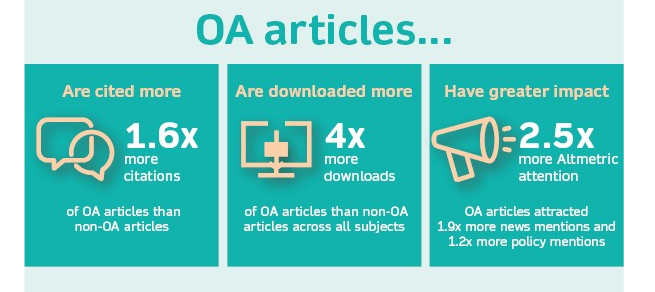
Figure 1: Infographic published by Springer Nature
5. The venue of publication is not important
Wellcome, in common with many other funders, has reasserted our commitment that when we assess research outputs during funding decisions, we consider the intrinsic merit of the work, not the title of the journal or publisher.
Moreover, all Wellcome-funded organisations must also publicly commit to this principle. For example, they can sign the San Francisco Declaration on Research Assessment, the Leiden Manifesto or equivalent.
We have produced guidance for organisations on responsible and fair approaches for research assessment, that sets out three high-level requirements and other activities they could consider to support these.
Plan S
Wellcome’s OA policy is fully aligned with Plan S, the initiative spearheaded by Science Europe and the European Commission now supported by 24 other funders.

